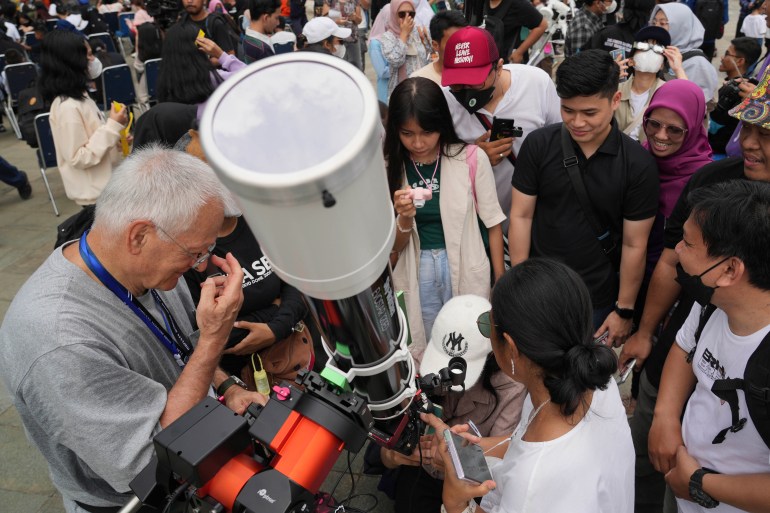Remote town of Exmouth plunges into darkness for 58 seconds in the kind of eclipse that occurs only once a decade.
Some 20,000 people gathered under a cloudless sky in the northwest Australian coastal town of Exmouth to enjoy a rare total solar eclipse that plunged the region into darkness for 58 seconds as the moon blocked out the sun.
The remote town with fewer than 3,000 residents was one of the best vantage points in Australia to see the eclipse that also crossed Indonesia and East Timor.
An international crowd had been gathering at Exmouth for days, camping in tents and trailers on a red, dusty plain on the edge of town with cameras and other viewing equipment pointed to the skies.
“Many people become addicted to that minute or so of eerie otherworldliness,” said John Lattanzio of the Astronomical Society of Australia.
“They become ‘eclipse chasers’ and they travel all over the world for repeat experiences.”
The totality occurred at 11:29:48 local time (03:29:48 GMT) on Thursday, bringing darkness and a spectral calm, according to those who were there.
Less than a minute later, the dusty outback was again bathed in light.

NASA astronomer Henry Throop was among those at Exmouth, loudly cheering the eclipse in the darkness.
“Isn’t it incredible? This is so fantastic. It was mind-blowing. It was so sharp and it was so bright. You could see the corona around the sun there,” the visibly excited Washington, DC resident told the Australian Broadcasting Corp.
People in West Papua and East Timor were also able to witness the total eclipse.
In the Indonesian capital, hundreds flocked to the Jakarta Planetarium to watch the partial eclipse, which was obscured by clouds.
Azka Azzahra, 21, came with her sister and friends to get a closer look by using the planetarium’s telescopes.
“I am still happy to come even though it is cloudy. It is happy to see how people with high enthusiasm come here to see the eclipse, because it is rare,” Azzahra said.
The call to prayer resounded from the city’s mosques when the eclipse phase began as Muslims said eclipse prayers as a reminder of God’s greatness.

The hybrid solar eclipse was mostly over water as it tracked from the Indian Ocean to the Pacific Ocean. The few people in its path either saw the darkness of a total eclipse or a “ring of fire” as the sun peeked from behind the new moon.
The eclipse also gave scientists a chance to observe the sun’s corona, which is usually obscured by its bright rays.
Witnessing a similar eclipse once helped Albert Einstein hypothesise that light can bend.
Such events happen about once every decade: The last one was in 2013 and the next one is not until 2031.

